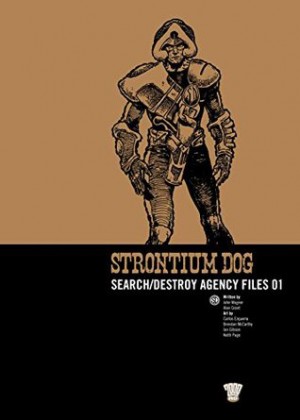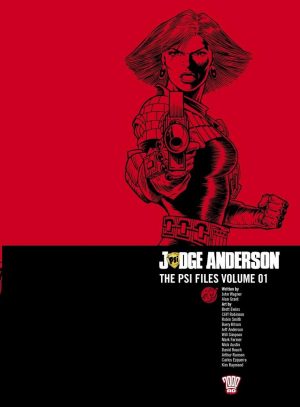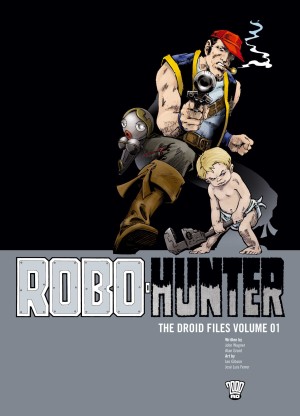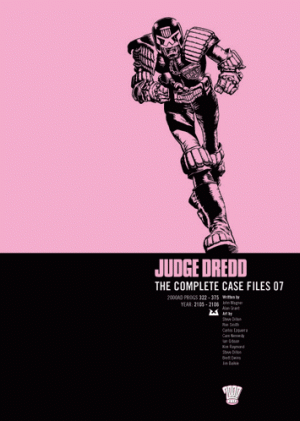Review by Frank Plowright
Of all the continuing successes introduced in the first five years of 2000AD Rogue Trooper is the only feature without the involvement of writers Pat Mills or John Wagner. Instead he was the creation of their contemporary Gerry Finley-Day. A brief to create a future war strip was playing to his strengths, and he came up with a solid concept. Rogue is the only surviving genetic infantryman embroiled in a civil war for which he’s been genetically modified to withstand dangers and conditions that would kill ordinary humans. His personality and experiences can be downloaded to a computer chip, and he’s accompanied by the chips of his three comrades, fitted to his backpack, helmet and gun.
So far, so good. Finley-Day didn’t see any need for complications, so Rogue is on Nu-Earth fighting for the well-intentioned Southers against the evil Norts, and his ongoing mission is to locate the traitor general who sold him and his comrades out. Designer and first artist Dave Gibbons supplied a no-frills design that’s memorable and adaptable, with Rogue’s blue skin making him distinctive in colour strips. With 95% of this collection drawn by Gibbons (sample spread left), Colin Wilson and then Cam Kennedy (sample spread right), the art is special throughout, with Kennedy’s startlingly atmospheric work a contender for his career’s best as the series continues.
Very soon after his introduction Rogue was second only to Judge Dredd in 2000AD’s popularity polls. However the great concept and fantastic art flatter to deceive, because Finley-Day’s never able to extract himself from the conventions of British boys’ comics. While Mills fired the imagination with Nemesis and Slaine, and Wagner with Alan Grant constantly built onto Judge Dredd’s world, Rogue slogs through one formularised episode to the next. Dialogue is mannered, there’s little imagination, and how threadbare some of the material is becomes apparent when a lesser artist is allocated a strip.
Occasionally, though, Finley-Day pulls a surprise from the hat. An extremely good early story features two newly shipped in soldiers with vastly different personalities, and how that results in tragedy when they meet Rogue. Other notable short inclusions feature Brand and Brass, looters by trade who’ll turn up every now and then, and intelligent barbed wire.
Almost half this collection is one or two-part stories, but it’s when Finley-Day begins to expand his ambitions that most of the superior content manifests. He initially takes inspiration from contemporary Judge Dredd epics by featuring episodic chapters linked by an over-riding plot, but moves into more coherently linked material. Rogue’s dialogue never entirely convinces, but the Complete Collection’s second half jogs along entertainingly enough.
Alan Moore’s name also features on the cover, and although his contribution is a single five-pager written for an annual early in Moore’s career, it betters much else of what’s here as Moore works towards a good homily about the effects of war, while Ewins draws images he’ll later recycle.
Almost all this material featured in earlier bulky compilation Tales of Nu-Earth 01, and Titan’s 1980s album-sized series are slimmer, but nice packages. Start with Book One for most of the Gibbons-drawn stories.







